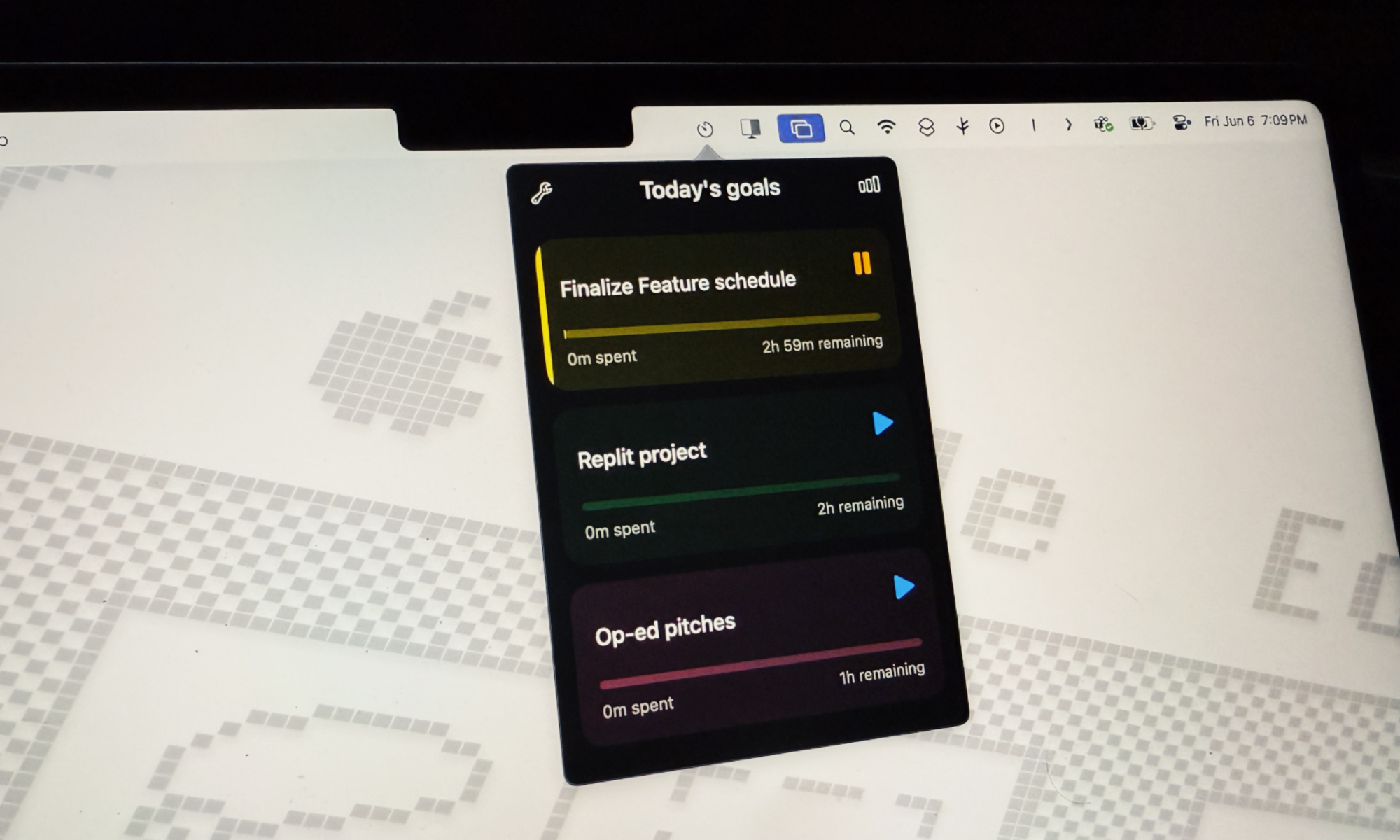When Apple put a notch on the MacBook, I was immensely excited about the functional possibilities, the same kind you see built around the Dynamic Island on iPhones. Expanding live updates, current activities, and navigation guidance are just a few of the examples.
Unfortunately, that is yet to happen on the MacBook. With the massive redesign across macOS Tahoe, I was again hopeful that the notch would finally find a purpose. Again, I was disappointed. Thankfully, the developer and open-source community have built some fantastic utilities that extract the best out of the boat-shaped notch.
I recently wrote about the Boring Notch and was impressed by with the premise of turning it into a hub for music playback controls, sharing files, calendar access, and even webcam preview. A week ago, I came across another notch-focused app to help you get focused work done using a familiar technique.
What is FocusNotch?

FocusNotch is a dual-purpose app. First, it turns the notch into a Dynamic Island where you see a persistent progress timer. Second, it lets you block certain websites (read: social media) at a network extension level and get focused work done.
The setup is fairly straightforward. You download the app from the Mac App Store, launch it, grant it network extension permission, and you’re good to go. Next, all you have to do is take the cursor close to the notch area, and it will expand to show you more controls.
The app lives entirely around the notch. There is no dedicated window running in the background. You don’t even see an active icon in the menu bar. Up front on the home section, you see a large digital stopwatch timer that you can set according to your routine.

Next to it is the section where you can add websites you want to block during focused work, such as YouTube, X, Instagram, or whatever corner of the internet that distracts you. You can add multiple websites in one go, but you can’t whitelist as long as a focus is active.
Does it work?
Well, to be fair, whether this app works depends on your own discipline. The underlying idea is similar to the Pomodoro technique. Simply put, you set small targets where you engage in deep work, take a small break, and then return for another session.
Does it work? Well, it did, for me. The sight of a persistent task timer around the notch kept me from stepping away from my Mac. Only when I had finished one cycle of focused work did I take a small break, before returning for another session.

Here is what research published in the British Journal of Educational Psychology says about the impact of Pomodoro focus and self-regulated work breaks:
Taking pre-determined, systematic breaks during a study session had mood benefits and appeared to have efficiency benefits (i.e., similar task completion in shorter time) over taking self-regulated breaks.
Here is my suggestion, though. Don’t set too long focus sessions, as they will only give you fatigue and eventually suppress the benefits. Depending on your work, try sessions that are like 30 minutes, and then make gradual progress. For me, sessions between 45 minutes to 2 hours worked best to finish research or write an article.
What can it do better?
There is a certain charm in apps that focus on accomplishing one particular goal, and do it in a minimalist fashion. FocusNotch falls in that category. However, I wish it could integrate a few other tricks. For example, instead of setting a single timer, it should also allow the creation of multiple focus timers separated by a break.
TimeCraft, a beautifully designed macOS utility, lets you set multiple timer-based work targets and even color-code them, as you can see below. I also wish there were a route to automatically import a list of distracting websites and whitelist them automatically based on the focus duration with a scheduler tool.

Apps like AppBlock do a fantastic job at it, and for free. 1Focus is another neat option, offering users a block-based approach to restricting websites and creating multiple lists, as well. FocusFirewall is a rather pricey alternative that runs entirely in the Menu Bar and offers a Mac-native design.
I also noticed that the website blocking system in FocusNotch sporadically conked out on my M4 MacBook Air. Of course, I mentally sidelined the thought of opening X when a focus timer was flashing atop the screen, so there’s that helping hand from self-discipline.
Overall, FocusNotch is a neat little app that can help you get work done across short spells of no-distraction activity. And the fact that it gives a purpose to an otherwise useless notch, without costing you a penny, is just the cherry on top.




